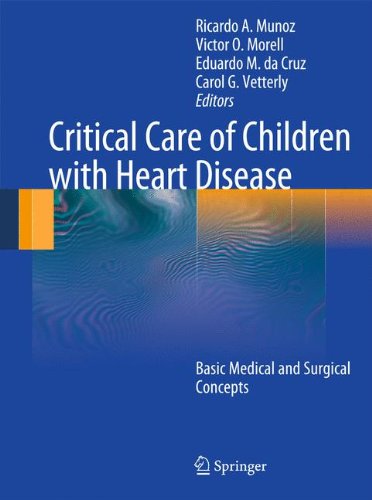

Most ebook files are in PDF format, so you can easily read them using various software such as Foxit Reader or directly on the Google Chrome browser.
Some ebook files are released by publishers in other formats such as .awz, .mobi, .epub, .fb2, etc. You may need to install specific software to read these formats on mobile/PC, such as Calibre.
Please read the tutorial at this link: https://ebookbell.com/faq
We offer FREE conversion to the popular formats you request; however, this may take some time. Therefore, right after payment, please email us, and we will try to provide the service as quickly as possible.
For some exceptional file formats or broken links (if any), please refrain from opening any disputes. Instead, email us first, and we will try to assist within a maximum of 6 hours.
EbookBell Team

0.0
0 reviewsPediatric cardiac intensive care patients pose special challenges to those practitioners caring for them. Many issues may be encountered when caring for children in a cardiac intensive care setting, which will significantly influence the management of these patients.
Critical Care of Children with Heart Disease provides the physician with an overview of both the medical and surgical facets of caring for pediatric patients with congenital or acquired cardiac disease. It covers the general aspects of pediatric intensive care ranging from mechanical ventilation and cardiac anesthesia, sedation and pain management, to cardiopulmonary bypass, cardiac catheterization, echocardiography, in addition to describing the special monitoring required for pediatric cardiac patients. It also includes important recent developments in assessing and reporting risk factors. Specific cardiac anomalies, including acyanotic defects, right and left obstructive heart lesions, atrio-ventricular valve anomalies, pulmonary hypertension, cardiomyopathies, and other complex heart defects, are also addressed, while mechanical assistance, renal replacement therapy, transplant, arrhythmias, as well as the ethical and legal issues involving the discontinuation of support of patients are also covered in detail.
The internationally renowned Editorial board have assembled a distinguished panel of contributors to write this valuable teaching and learning resource. It will be of great value to all physicians involved in the management of pediatric cardiac intensive care patients including cardiac intensivists, surgeons, fellows, residents and nurses.